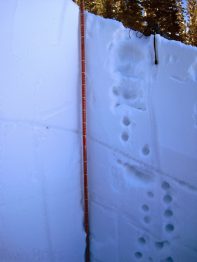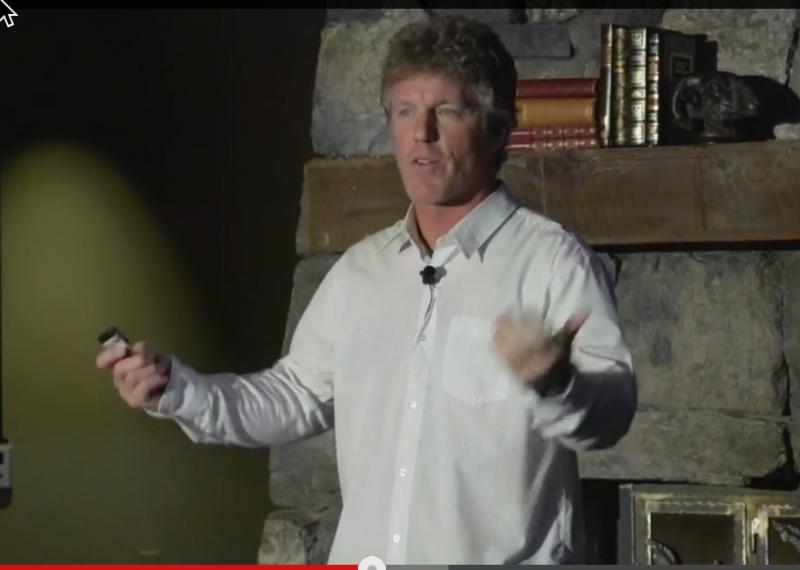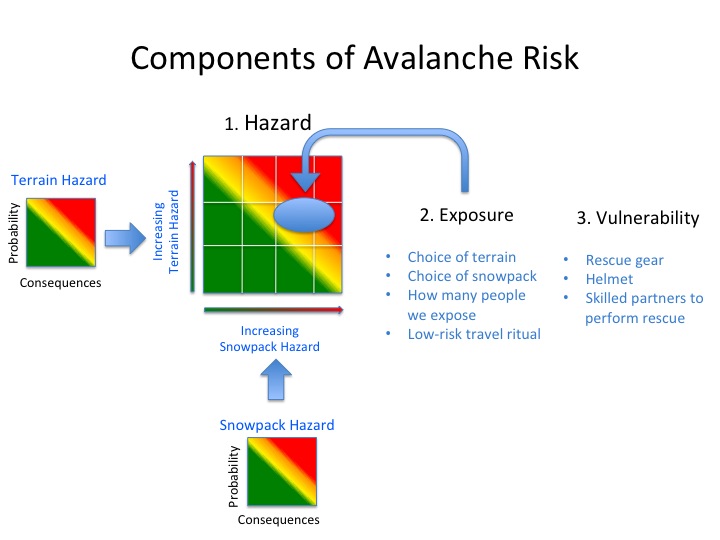 |
| Natural deep slab off of Afley Peak |
Thanks to Art Mears and Ben Pritchett for their contributions to this article.
 |
| Large natural avalanches off of Snodgrass Mountain snapped trees and crossed Gothic Road |
 |
| Natural deep slab off of Afley Peak |
Thanks to Art Mears and Ben Pritchett for their contributions to this article.
 |
| Large natural avalanches off of Snodgrass Mountain snapped trees and crossed Gothic Road |
 |
| The obvious grey stripe in the middle of the pit is a layer of buried surface hoar found on Schuykill Ridge this week. |
We are just exiting another high pressure weather pattern that is favorable for surface hoar growth. When you’re out touring in avalanche terrain, look for surface hoar and what slopes it is forming on to give you a better idea of places to avoid if it gets buried and becomes problematic. And don’t forget check our website for the most up-to-date avalanche conditions before you head out. www.cbavalanchecenter.org
-Zach Guy
Super well documented near miss today in the backcountry near Alta, UT. Check it out and learn from other’s mistakes..
http://utahavalanchecenter.org/avalanches/18960
Skier’s account from her own blog below:
http://amieski.com/2013/12/12/blind-spot/
Photographer’s own account
http://blackdiamondequipment.com/en/experience-story?format=landing&cid=adam_clark_grizzly_gulch
-Ian
For the past several years, much of the early season buzz about whether we were going to have a killer winter or a dud revolved (over. and over. and over…) about the pros and cons of an El Niño or La Niña atmospheric and oceanic signal.
Here is a post from one of my former meteorology professors at the University of Utah and total powder junkie himself, Jim Steenburgh. He runs a great weather blog that discusses meteorology mostly around Utah, but a ton of his material is applicable to our locale as well. Bookmark it and check it out! Infer what you can about how the lack of ENSO will affect our weather patterns…the overarching theme being….your guess is as good as mine. A good perspective if nothing else.
http://wasatchweatherweenies.blogspot.com/2013/08/outlook-for-20132014-ski-season.html
My take is that the Arctic Oscillation is just as big of a contributing factor that is often over looked. “The positive phase of the Arctic Oscillation brings ocean storms farther north, making the weather wetter in Alaska, Scotland, and Scandinavia and drier in the western United States and the Mediterranean. In the negative phase of the Arctic Oscillation the patterns are reversed. A strongly negative phase of the Arctic Oscillation brings warm weather to high latitudes, and cold, stormy weather to the more temperate regions where people live. Over most of the past century, the Arctic Oscillation alternated between its positive and negative phase. For a period during the 1970s to mid-1990s, the Arctic Oscillation tended to stay in its positive phase. However, since then it has again alternated between positive and negative, with a record negative phase in the winter of 2009-2010″(National Snow and Ice Data Center).
I will probably steer some of my posts of this forecaster’s blog to Jim’s blog occasionally. Enjoy this snowy Sunday…so far I like No Niño…
-Ian Havlick
Grant Statham gave a great TED talk recently on risk in avalanche terrain that has been circulating around the avalanche community lately. Grant has spent a lifetime climbing, skiing and guiding in extreme terrain around the world and he has spent the past 10 years or so working as a risk management specialist for Parks Canada. Grant does a great job of explaining risk and hazard and how it relates to travel in avalanche terrain in this TED talk.
See Grant’s 12 minute talk by clicking HERE or on Grant’s photo below.

Grant Statham from Parks Canada
The components of avalanche risk from Bruce Tremper’s (Utah Avalanche Center Director) new book Avalanche Essentials, which illustrate the points Grant makes in his talk.
-Ian Havlick
CBAC Forecaster
–>
-Zach Guy
*)
(*
*)
(*